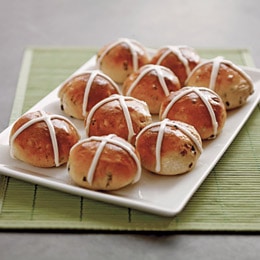The Friday before Easter Sunday is significant for two major world religions: Christianity and Judaism.
For Christians the Friday before Easter Sunday is the day Jesus Christ was crucified at Calvary. Christians, primarily Catholics, observe this “Good Friday” as a day of fasting where only one meal is permitted and the meal should abstain from meat.
For Jews, this Friday also coincides with the Passover week. The Passover week is a Jewish festival which commemorates the Israelites’ exodus from Egypt where they were in slavary to the Egyptians.
Let’s take a look at some traditional foods for both of these commemorations:
First, for Christians observing Good Friday, the one full meal of the day should be meatless with a goal of providing simple sustainment rather than gratification. Keeping the meal simple prevents distracting worshipers from the significance of the Lord’s Crucifixion Day.
Many seafood dishes or a simple soup are popular sided with some bread and a salad or simply prepared vegetables. Omelets can also be a popular Good Friday meal since eggs and dairy products are allowed.
Probably some of the most popular Good Friday foods for Christians are fish and seafood dishes, simple vegetables, fish and chips and meatless pasta dishes. Also, don’t forget traditional Hot Cross Buns. It is customary for Roman Catholics to eat Hot Cross Buns on Good Friday which are small buns with a white cross decoration on top.
For Jews, the Passover week festival is full of foods heavy on symbolism.
Here are some examples:
Matzoh: this is unleavened bread (no yeast and like a cracker). The symbolizes the Israelites exiting so fast from Egypt they didn’t even have time to allow their bread to rise.
Zeroah (traditionally a piece of roasted lamb shank bone): the blood of a defect-free lamb the Israelites placed on their doorposts so the Spirit of the Lord would not take the life of their firstborn (the tenth plague). Lamp is a very important Passover dish symbolizing the Spring Lamb that was sacrificed.
Charoses: mixture of apples, nuts, wine and cinnamon, as a reminder of the mortar used by the Jews in the construction of buildings as slaves
Karpas: a vegetable, preferably parsley or celery, representing hope and redemption; served with a bowl of salted water to represent the tears shed
Wine: four glasses of wine are consumed during the service to represent the four-fold promise of redemption, with a special glass left for Elijah the prophet





One Comment